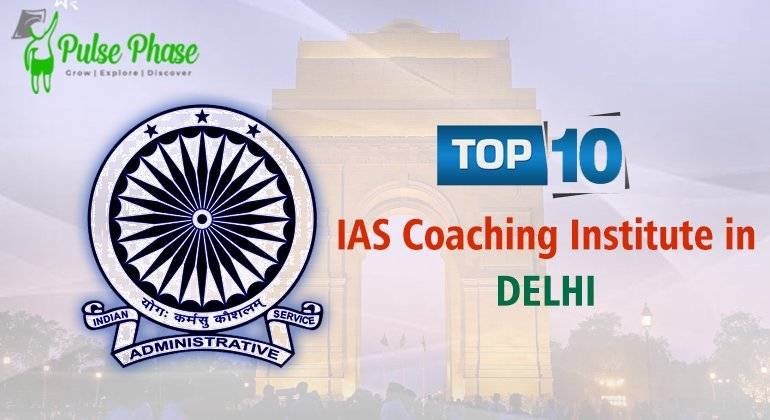India has an intensely competitive realm of academia where entrance examination plays a pivotal role in building students’ future. Among the distinguished national-level tests are the Common University Entrance Test (CUET), Joint Entrance Examination (JEE) and National Eligibility cum Entrance Test (NEET). We will compare CUET vs JEE vs NEET in this article. Each entrance exam is designed for a particular academic stream. CUET caters to undergraduate exams, while JEE and NEET are intended for engineering and medical aspirants.
This article will help you understand the three tests’ differences thoroughly based on their criteria, objectives, difficulty, and relevance.
OVERVIEW OF THE EXAMS: CUET vs JEE vs NEET
COMMON UNIVERSITY ENTRANCE TEST (CUET)
https://cuet.nta.nic.in/universities/
CUET commenced in 2022 by the National Testing Agency (NTA), it aims to provide undergraduate courses to students across India with fairness and ensure equity among students. Many central, state, and private universities accept CUET scores, which lowers the stress for students as they can apply to multiple universities with just one result.
JOINT ENTRANCE EXAMINATION (JEE)
JEE is an essential entrance test for students wanting to enrol in engineering.
The test consists of 2 stages: JEE Main, which provides the students with access to IIITs, NITs, and other colleges; and JEE Advanced, which opens gates to several prestigious IITs.
NATIONAL ELIGIBILITY cum ENTRANCE TEST (NEET)
To enter medical colleges, NEET is an important test and is considered for the enrollment of students to courses like MBA, BDS, and AYUSH.
NEET is a mandatory test for both private and government colleges, conducted only once a year.
PURPOSE AND ADMISSION SCORE
- CUET: This test is for enrolment into undergraduate programs like liberal arts, mass communication, B.A in English and others at participating universities such as Delhi University, JNU, BHU, etc.
- JEE Main: Focuses on enrolling students into engineering and technology programs.
- NEET: This test is an essential requirement for admitting students into medical courses.
While NEET and JEE Main cater to specific professions, CUET opens doors to various programs and supports a wide range of undergraduate streams.
EXAM STRUCTURE AND FORMAT: CUET vs JEE vs NEET
CUET
- The assessment consists of three sections: Language proficiency, domain-specific knowledge, and a General aptitude test.
- It is an online computer-based test with multiple shifts
- Candidates can choose from different subject combinations and languages.
JEE
- Physics, Chemistry, and Mathematics are the prominent sections in this exam.
- JEE Advanced consists of numerous challenging numerical and conceptual questions.
- Have objective-type questions and the mode is online
NEET
- 180 questions from Physics, Chemistry, and Biology in offline mode
- It has a fixed pattern, and the duration is 3 hours and 20 minutes.
- Single-phase examination with no subject choice.
SYLLABUS AND CURRICULUM FOCUS: CUET vs JEE vs NEET
CUET
- The test consists of questions from NCERT, mostly Class 12th content.
- Depending on the chosen subjects, the syllabus could vary.
- It mostly focuses on basic understanding, reading comprehension, reasoning skills, general knowledge, and current affairs.
JEE
- Both Class 11 and 12 syllabi are covered, but you need a deep and better understanding along with the ability to solve problems.
- More inclined towards conceptual clarity and application-based questions.
NEET
- NEET also follows up with the NCERT syllabus from Class 11 and 12
- Emphasises more on Biology, along with Physics and Chemistry.
- The key focus is on memorization and conceptual knowledge.
CUET vs JEE vs NEET
LEVEL OF DIFFICULTY
- CUET is considered as not an easy but not an impossible test. The focus is basically on evaluating academic knowledge and basic aptitude.
- JEE, especially JEE Advanced, is one of the most excruciating entrance exams in India because of its analytical and problem-solving.
- NEET is a moderately to highly difficult exam. While Biology is generally achievable, Physics and Chemistry can be quite challenging.
The difficulty of each exam may vary with the specialization of the field it serves, professional discipline demands more rigorous testing.
INSTITUTIONS ACCEPTING THE EXAMS
- CUET is considered by central universities and many private universities have started accepting CUET scores for undergraduate admissions.
- JEE scores are accepted by IITs, NITs, IIITs and other technical institutions.
- NEET scores are mandatory for all medical colleges in India, including elite institutions like AIMS and JIPMER.
CUET offers various courses and is broader in reach, whereas JEE and NEET emphasize on professional streams.
COACHING AND PREPARATION TRENDS
- JEE and NEET have a deep-rooted coaching industry, with students often starting as early as Class 9 or 10. Coaching hubs like Kota and Hyderabad are well-known for a better understanding and intense training.
- CUET is a new concept, it hasn’t yet developed a strong coaching ecosystem. Many students prepare from their NCERT books and school material.
CUET is an exam that is more accessible, specifically for students who are from rural or underprivileged backgrounds, since the exam preparation can be done by oneself.
POPULARITY AND COMPETITION
- CUET 2024: Over 14 lakhs of students appeared for the exam.
- JEE MAIN 2024: About 12 lakh candidates registered.
- NEET 2024: Saw a record registration of over 25 lakh aspirants.
Currently, the highest record for the highest number of candidates is the NEET exam, however, CUET is quickly gaining ground due to its inclusive nature and wide applicability.
FAIRNESS AND INCLUSIVITY
- CUET was initiated to remove any bias caused by varying board exam results and ensure fairness, along with providing equal opportunities to the students.
- NEET replaced several state-level medical exams, making the enrolment process centralized and more uniform.
- JEE ensures a standardised entry route to engineering colleges, but its two-stage structure can be intimidating for many.
CUET has played a vital role in making higher education more accessible and in minimizing disparities among various educational boards.
MENTAL PRESSURE AND STUDENT WELL-BEING.
- JEE and NEET aspirants often face significant stress because of the long preparation periods and intense competition.
- CUET is a less stressful exam as students typically take it after their 12th board exams, with fewer overlapping preparations.
However, with increasing competition, pressure may mount over time.
LOOKING AHEAD
- CUET is most likely to become a prominent method of undergraduate admission in most Indian universities.
- JEE and NEEt will continue to dominate admissions in their respective professional fields, but may see reforms in testing patterns and evaluation methods.
- Integration with school curriculum and holistic evaluation strategies may soon become the norm across all entrance exams.
Conclusion
CUET vs JEE vs NEET, all of them have a unique role in India’s education system. While CUET focuses on general academic admission and inclusivity, JEE and NEET serve as strict gateways to professional education. Choosing which one to go for depends on the aspiration and ambition of the students for long-term goals.
As CUET continues to grow in scope and acceptance, it may revolutionise the undergraduate admission landscape by offering a fair and flexible alternative.
Meanwhile, JEE and NEET will remain important tests in terms of engineering and medicine, demanding high levels of dedication and preparation.
To read more information about admissions related to CUET, visit the page https://www.pulsephase.in/cuet/




